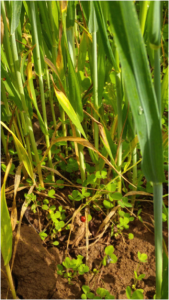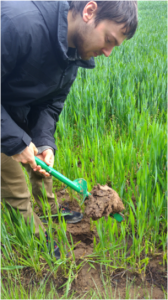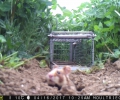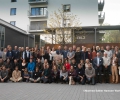Can the impact of innovative crops on the quality of soil be measured?
15 juin 2016Since 2014, several hectares of agricultural land have been the subject of experiments in the LIFE Alister Project. The main goals are to test strip till results, as well as crops used in underseeding and intermediate crops.
There are currently 150 farmers in Alsace who are taking part in these trials, which will shape tomorrow’s agriculture.
The goal is to identify the best agronomic choices not only to have an interesting agricultural production for farmers, but also to allow the European Hamster to survive. The European Hamster population is nonetheless, not the only biodiversity indicator to measure the benefits of these techniques. LIFE Alister partners also take the presence of other animal species into account to validate the benefits of their actions. This is the case with springtails.
Springtails are micro-organisms that live underground. Just like earthworms, they compost vegetal matter. They contribute to the dynamics of topsoil and indicate how healthy it is.
The CNRS, working closely with the ONCFS, has harvested samples of topsoil in order to measure the quantity of springtails: 2 core samples of earth with a 9 cm diameter and a 10 cm depth per zone studied. Here, the goal was to draw up a comparison between innovative crops parcels and so-called conventional crop parcels. Five samples were taken and analysed on each agricultural parcel by the Department of Ecology, Physiology and Ethology at the Hubert Curien Multidisciplinary Institute (CNRS, University of Strasbourg), working with the Catholic University of Lille’s Ecology and Biodiversity Laboratory.
The number of springtails was systematically much higher on the innovative parcels, on average, four times higher. The mean abundance in a conventional parcel is 15.5, whereas in an innovative parcel, it rises to 67.5.
The specific wealth, meaning the number of species found, is also much higher in innovative parcels than in conventional parcels.
This confirms, as if this was still needed, that the LIFE Alister project benefits all biodiversity in Alsatian plains.






